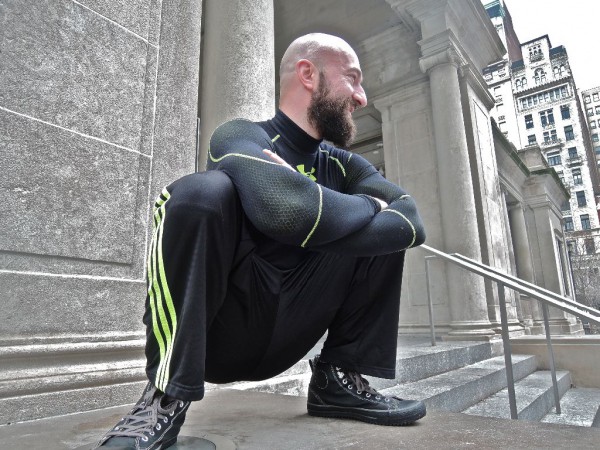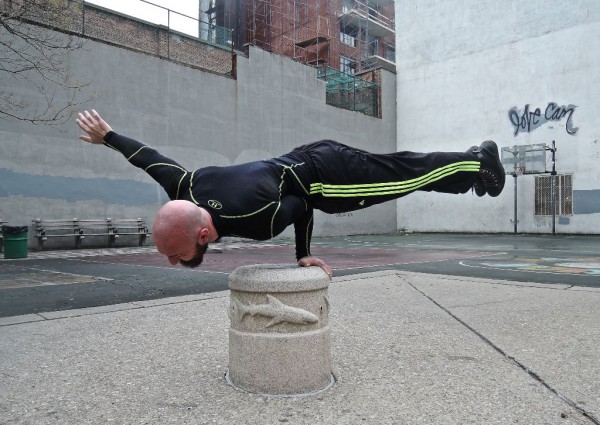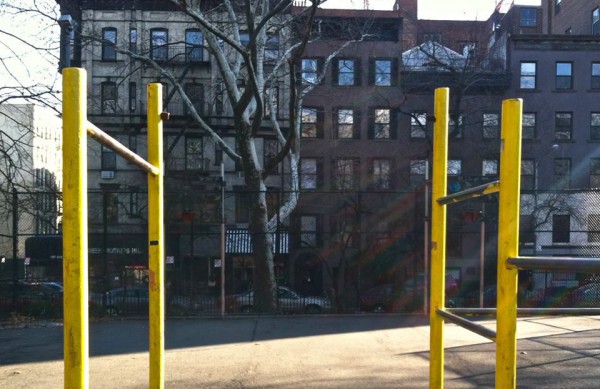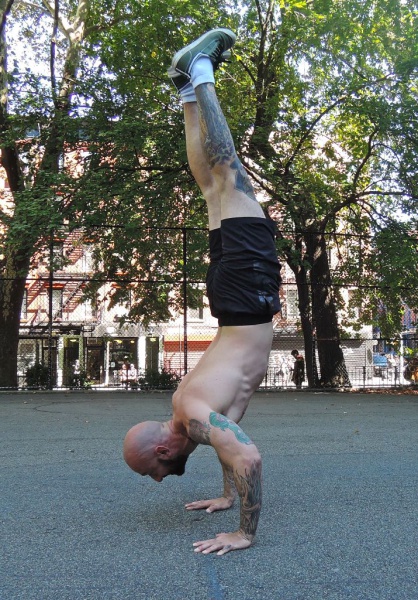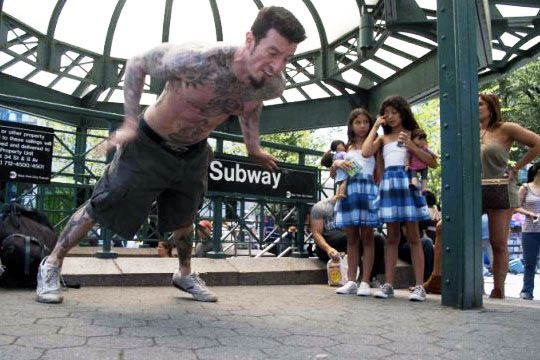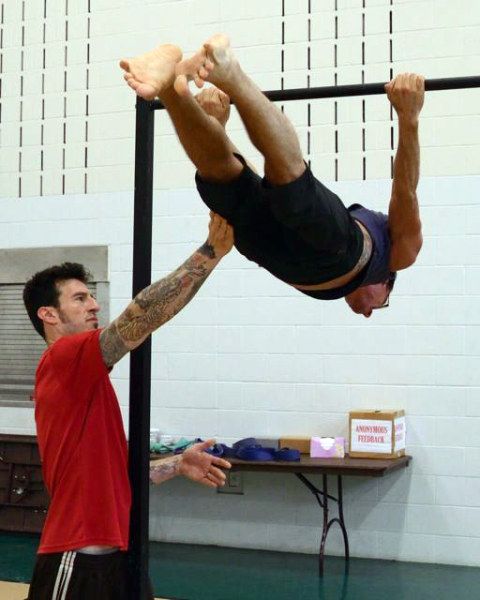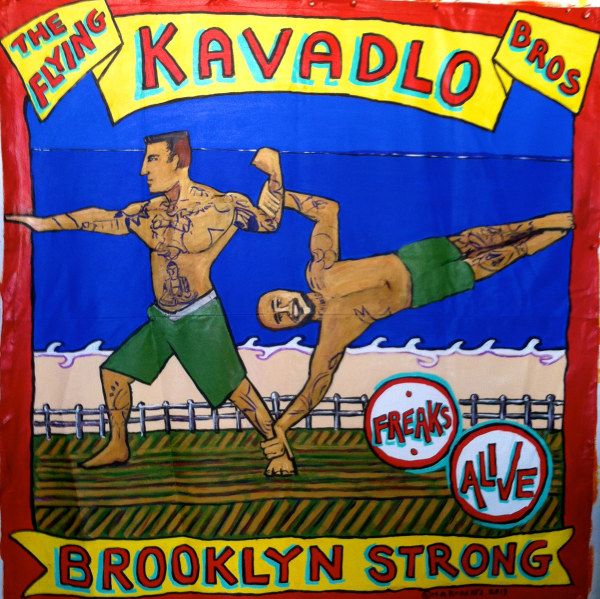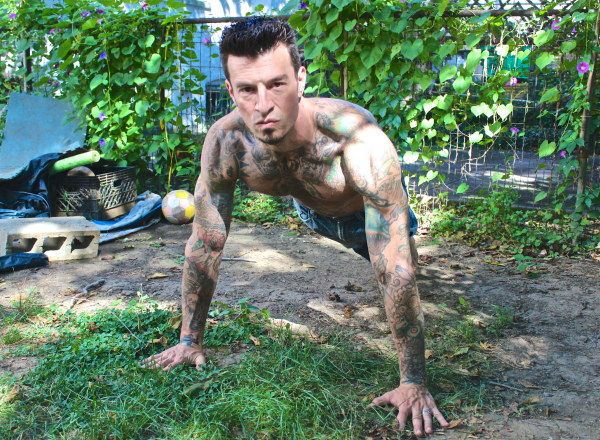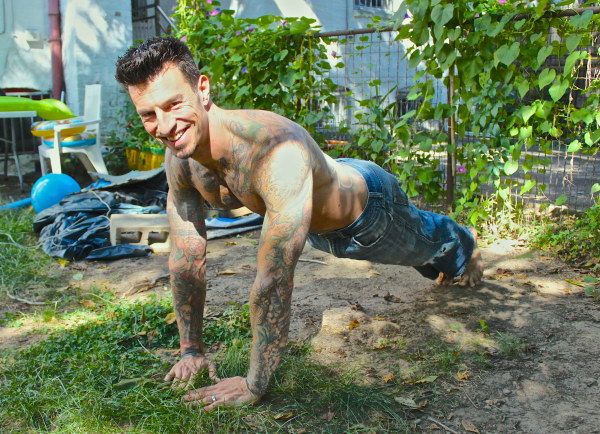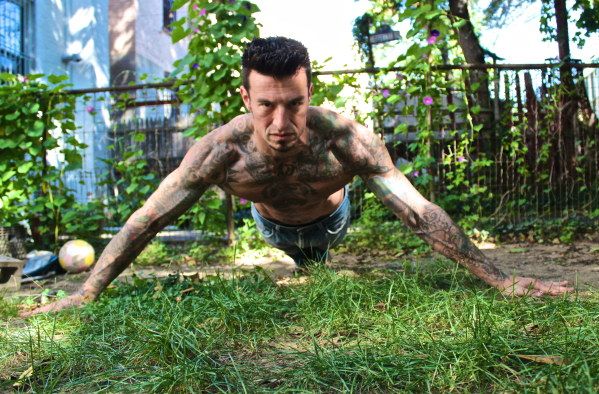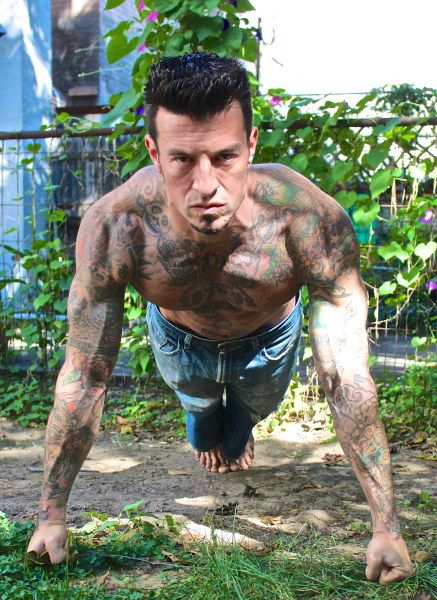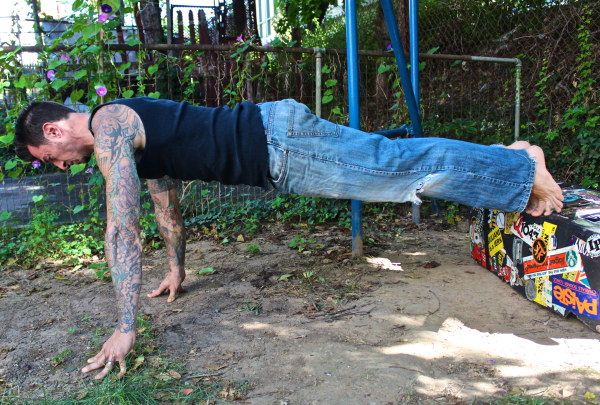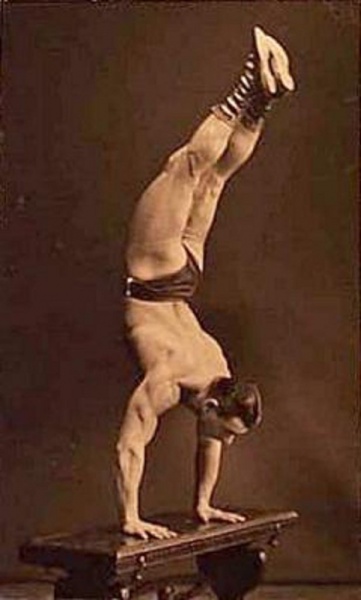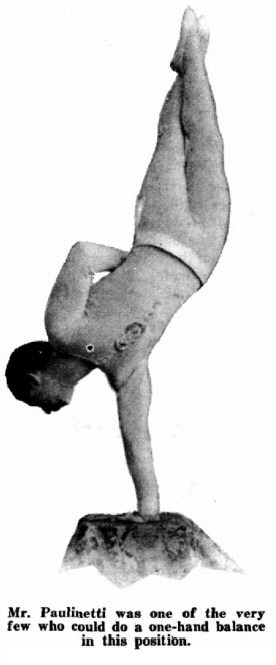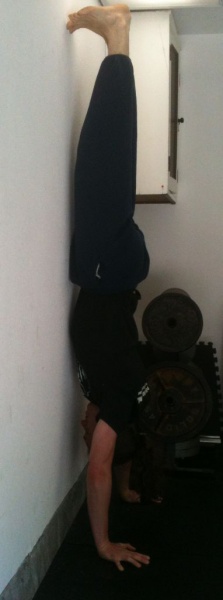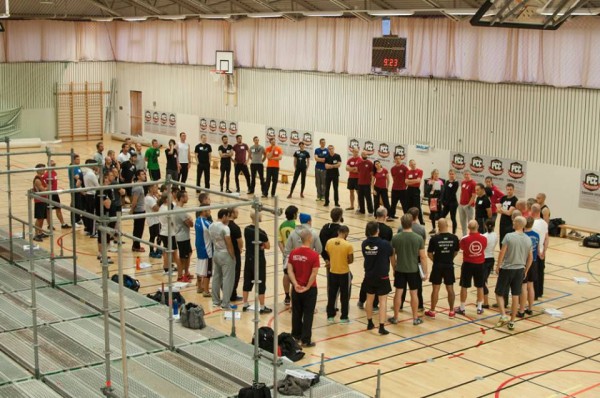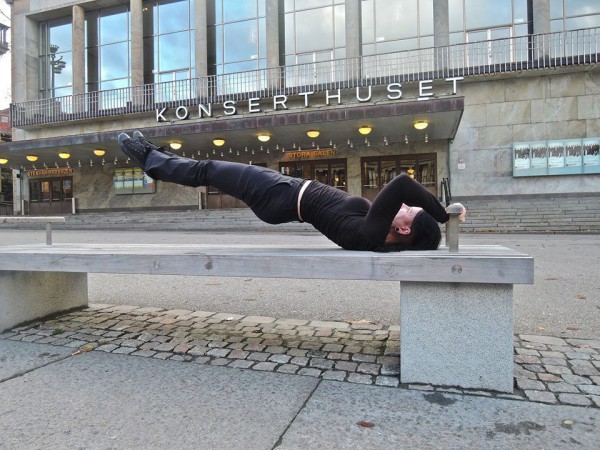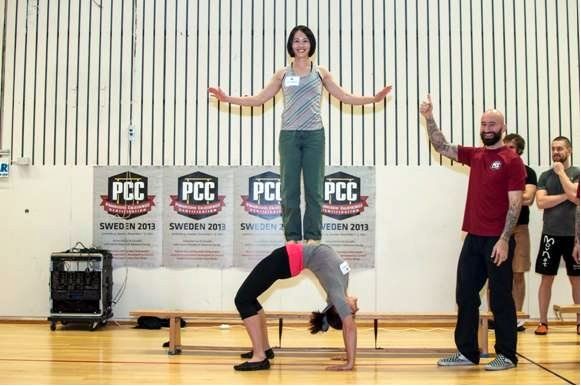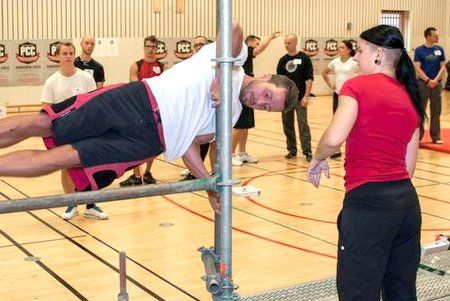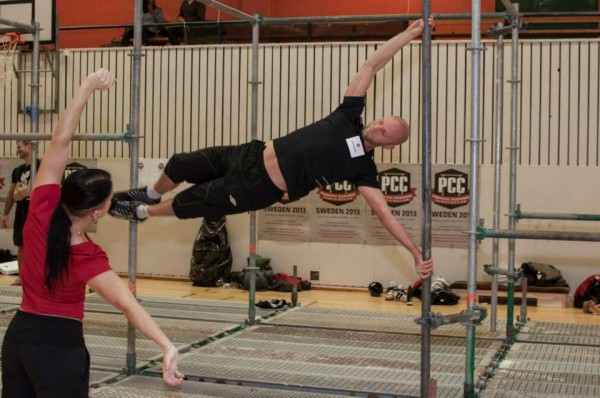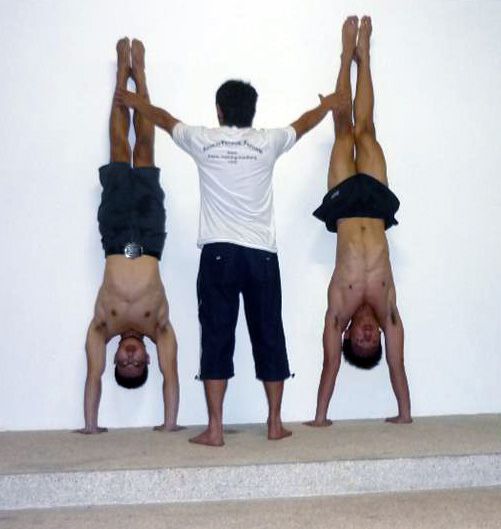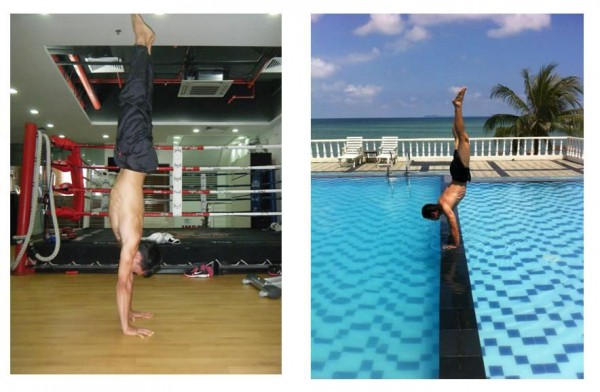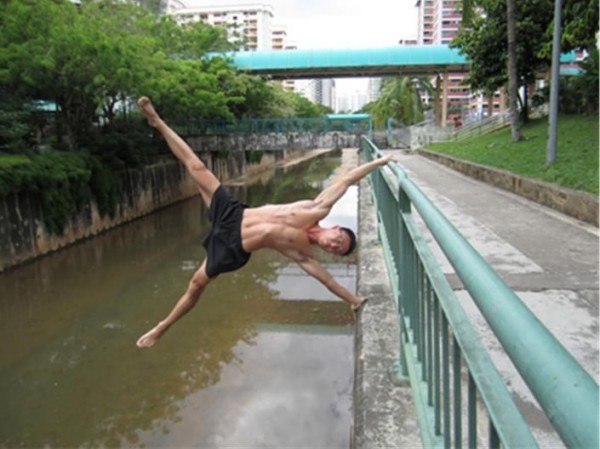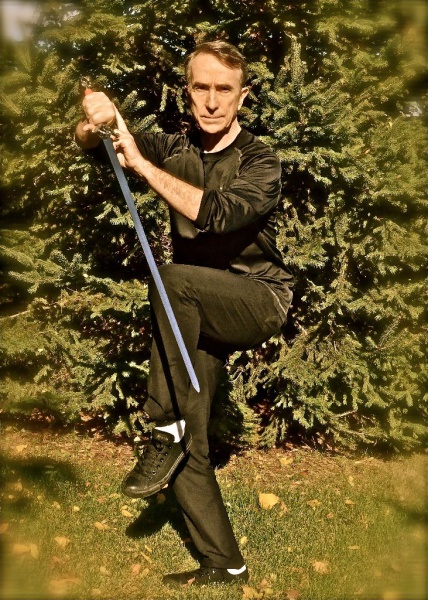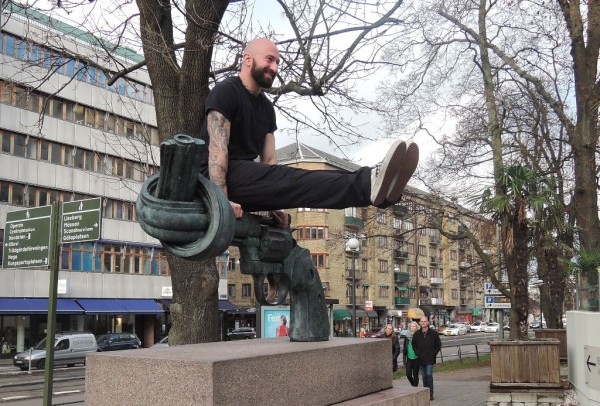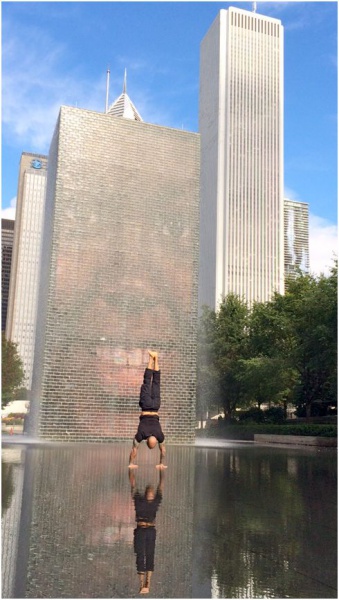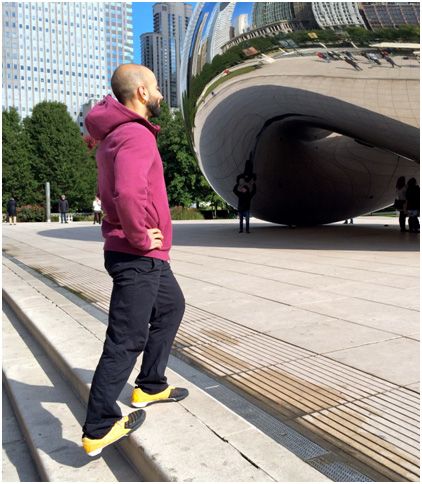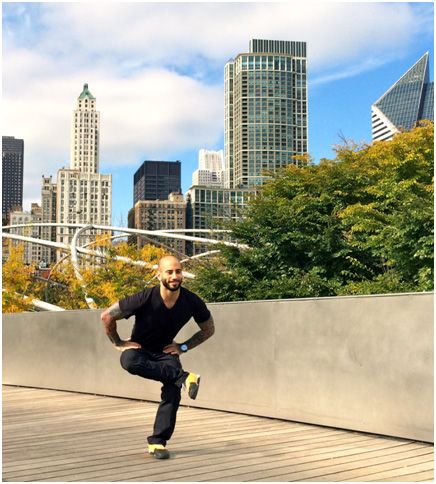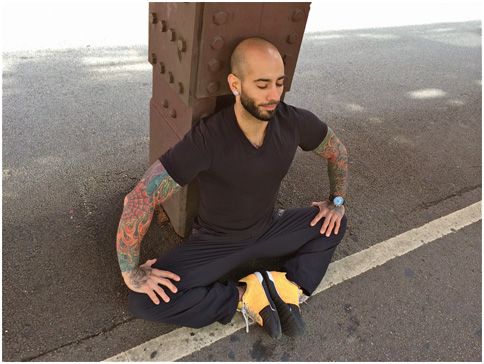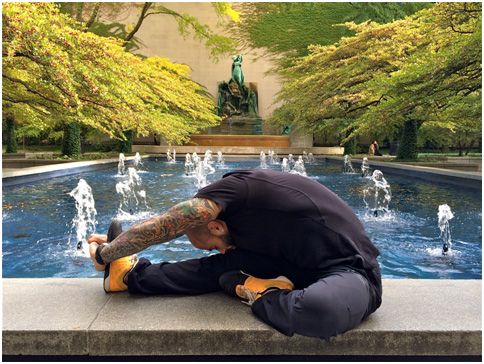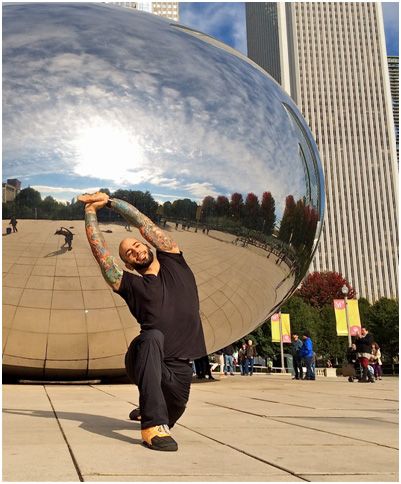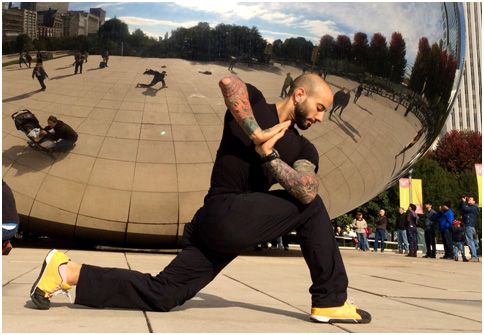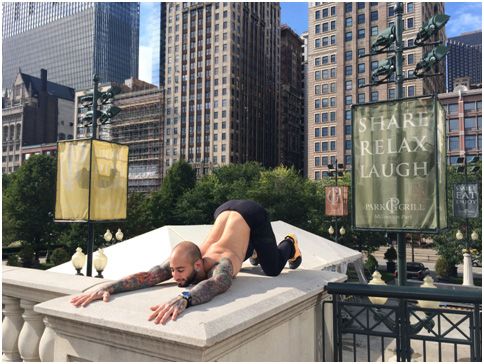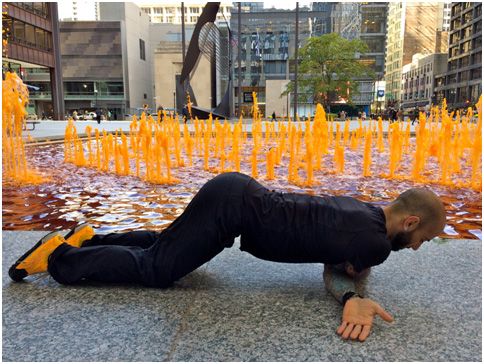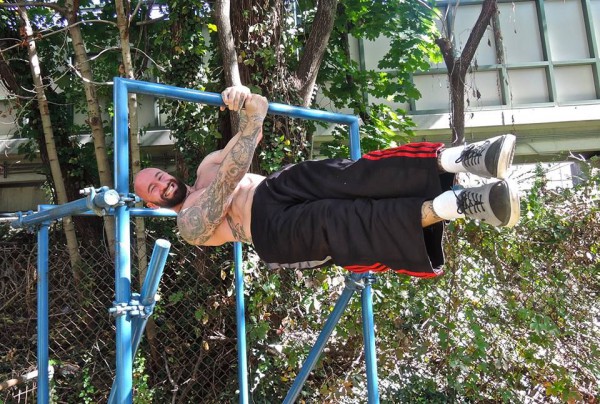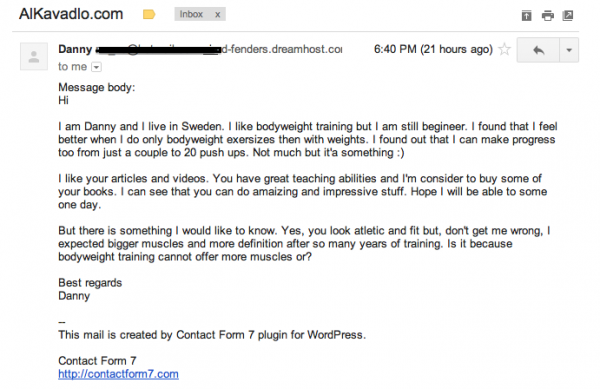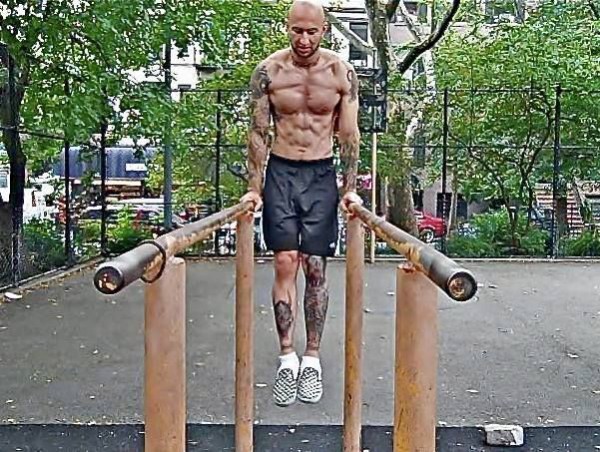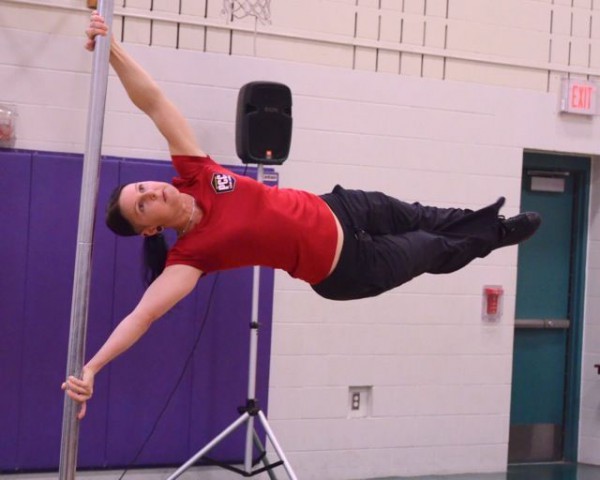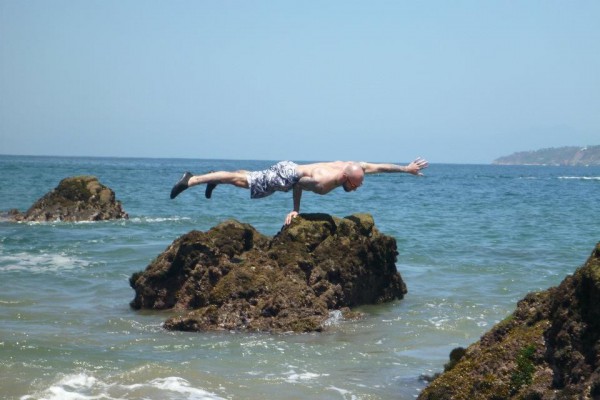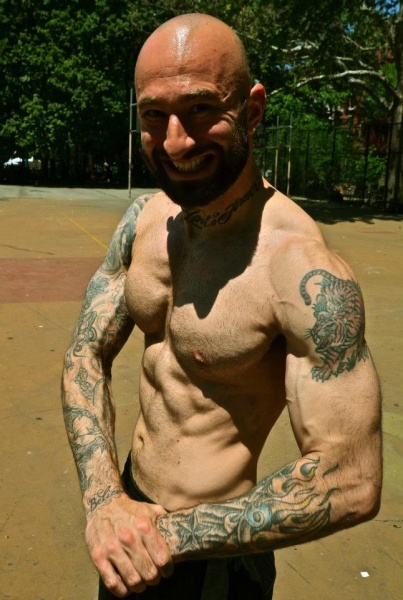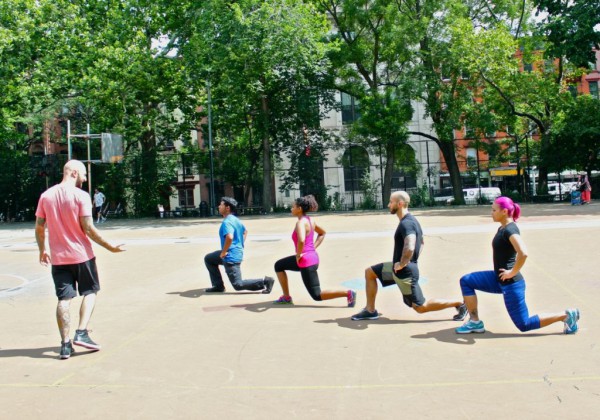
Welcome to the world’s finest bodyweight strength blog—and welcome to 2014! I really hope this year turns out to be something really special for all of ya.
New Year means a time for new fitness and conditioning goals—at least for a lot of folks. A brand-spankin-shiny new year is a perfect time for a fresh start…and God knows, millions of people need it. Two-thirds of Americans are overweight or obese; only 20% get regular exercise; and, horrifically, it has been estimated that less than 10% of the population can perform a full pullup. That’s only one in ten! (I think.)
Many folks are so goddam outta shape, they just have no clue how to make a start in calisthenics. So they put it off…sometimes, forever.
If that’s you—or someone you care about—then this blog is my New Year challenge for YOU. I’m often guilty of writing for experts. Why? Coz the bodyweight community is a remarkable one; it’s typified by smart, mature, knowledgeable, advanced athletes. I love you all, but this post’s not for you. It’s for the noobs.
What’s a “noob”? Well, in terms of bodyweight training:
- If you can barely do a handful (or less) of sloppy pushups;
- If a strict, full pullup is outta the question;
- If a full, deep squat is impossible or feels like it’s ripping your knees apart;
- If getting up off the couch leaves you out of breath;
- Or if any of the above apply to you;
…then yer a noob, kid. So if you are a desperate neophyte, an interested but confused lurker, or a collapsed ex-athlete—listen up!
Four Fundamentals in Strength Calisthenics
In this post I’m going to give you FOUR basic goals to get working on. You don’t need more than that—the more goals you set, the more your willpower gets spread around ‘em, so the less likely you are to meet any of them. Research also shows that the more inconvenient New Year goals are, the less likely they are to get met. So all these exercises, and their regressions (i.e., easier versions) can be performed in a tiny space, in the comfort of your own home. You don’t need jack s*** to start today. You don’t need to buy my book. You don’t need a pullup bar. You don’t need a gym membership or new sneakers. All you need is a little courage to accept my challenge, a few minutes time, and enough space to lay down. Everybody has that much, right?
Here are the goals:
 All techniques are to be executed with perfect form.
All techniques are to be executed with perfect form.
To a dedicated athlete, these four are modest goals; easy, in fact. But they are also incredibly important; the average de-conditioned American would be unable to meet these standards…amazingly, given the decline of fitness in our schools, even the average teen would struggle! So let’s get to work on these fundamentals. If these basics are beyond your reach, you stand zero hope in hell of going any further in strength or fitness. And if you really ARE new to strength training, don’t give me any of that “shouldn’t I be lifting weights?” bulls****. If you can’t do ten pushups perfectly, you got no business laying down on a bench press. Likewise, if full bodyweight squats are impossible, then perching under a loaded barbell or leg press for messy, incomplete reps is only going to wreck your knees.
Bodyweight comes first!
The Four Techniques
1. Full Squats:
Full squats generate strength in the entire lower body—quads, hamstrings, calves, glutes, shins, everything. They also build mobility in two areas that badly need it, the knees and ankles, while strengthening the lower back. To put it bluntly, they are essential, whether ya like it or not.
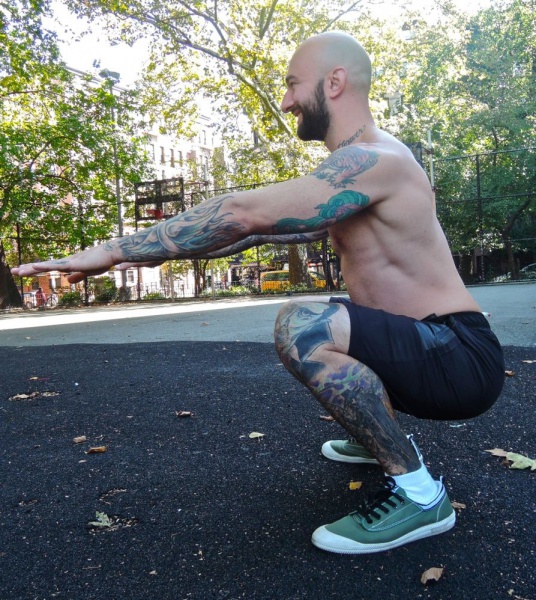
You can’t do twenty full squats until you can do one full squat RIGHT. So begin by focusing on deep motion. I don’t care how weak or rusty your knees are—you can begin building motion using no weight on the knees at all. Lie on your back or shoulders, with your legs straight up, and bend your knees as fully as you can that way. (These are called shoulderstand squats.) As your mobility improves, try deep squats the right way up; use a partner or a sturdy object to help pull yourself out of the hole. Over time, use the assistance less…build to solo half-squats, and ¾ squats. Soon full squats won’t seem so tough. Once you can do your first set of 5-10 full squats, just add a perfect rep every so often. You’ll hit twenty reps real soon.
2. Full Pushups
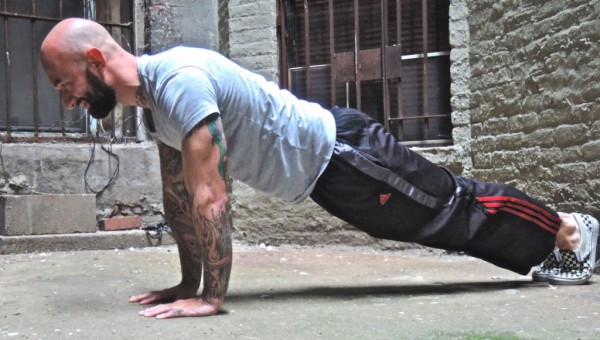
Hey, ten pushups is easy right? Everyone can do that, right?
Wrong.
Most people—even coaches who should know better—do them wrong. If you do them the right way—my way—they are tough as hell. For a start, most folks rush their pushups. I want you to eliminate ALL momentum (if momentum is doing the work, your muscles aren’t, right?). I want you to take two seconds up, two seconds down, with a moment’s pause at the bottom position. Secondly, you need to go deep—go down until your sternum is a fist’s width from the floor: no less. (Use books or an object like a softball to guide you, at first.) Third, don’t bounce! When you descend so that your sternum touches your books, it should touch them as lightly as you would kiss a baby on the forehead. This technique (“kiss-the-baby”) is murder, forcing you to control your body FULLY. What else is strength, but control?
Doing pushups this way makes them brutal and incredibly productive as an exercise. If they are too hard for ya, begin doing them on an incline, or even against a wall. Once you find a pushup technique you can perform five reps in, add a rep every workout or two until you can do ten, then make things harder.
3. Leg Raises
Forget what you have probably been told about working “abs”…isolating the muscles, tensing, and performing lots of sets of teeny crunches or machine exercises. Real, functional strength—from hanging on a bar to picking up a fridge—requires not just strong abdominals, but an iron “anterior chain”—that means your hips, abs, intercostals, serratus, obliques and even the deep muscles of the quads. For strengthening your anterior chain perfectly, God gave you a gift—leg raises!
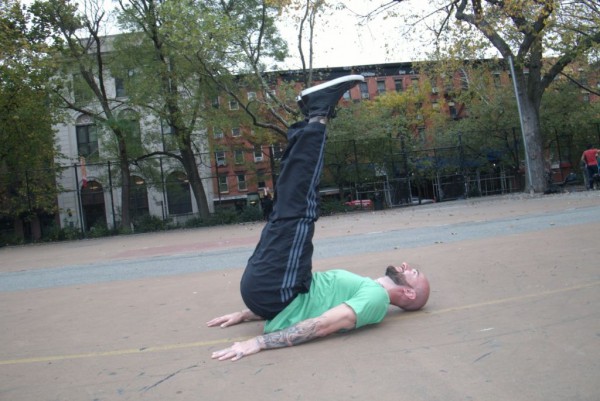
As usual, begin easy. Start with lying knee raises; build to twenty reps. Then extend the legs a little. Then you can try one–leg leg raises, with the knees locked. Pretty soon, twenty strict leg raises will be within reach, and your abs will be harder than those pathetic crunches could have ever got ‘em. Damn, you’ll be doing these suckers hanging in no time. Six-pack from Hell, here we come…
4. Straight Bridge
The straight bridge is a wonderful exercise for noobs to aspire to master. Whereas leg raises work the entire anterior chain—the muscles at the front of the bod—the straight bridge works the posterior chain. It builds the spinal erectors, reduces low back pain, bulletproofs the spine, trains the hamstrings, and helps heal bad knees. Because the arms are pushing behind the body, this type of bridge also strengthens the “lats” of the back, and the muscles around the shoulder blades—an awesome benefit for those who don’t have a pullup bar. Straight bridges also give ya triceps of steel kid—no more kickbacks necessary.
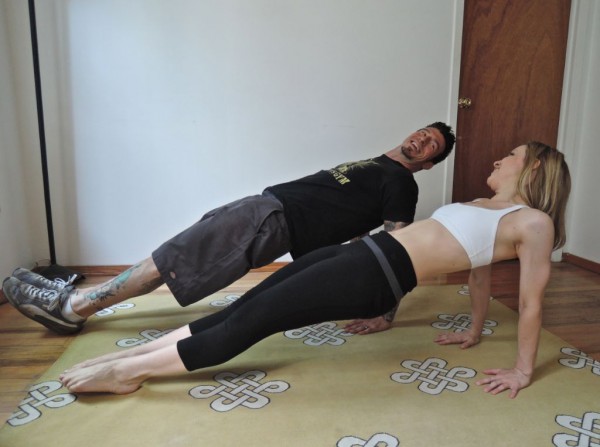
Normally I wouldn’t advise beginners to perform bridges—I think the time and energy is better spent on pulling work, typically on a low horizontal bar. That said, if you don’t have access to a bar, straight bridges can be a good way to work the back muscles.
Bridging can be demanding—so start easy. Commence with short bridges (with the shoulders on the floor), then move to table bridges (straight bridges, but with the knees bent). When ten seconds of perfectly aligned form is easy, start adding seconds—build to 20 seconds, then move to something harder. If straight bridges are too easy, try them with one leg lifted off the floor. That will teach you what your hamstrings were made for.
How to Train for these Goals
How do you go about training to achieve these goals? For a start, if you are de-conditioned, you need to get an okay from a doc before you start training hard (that’s the legal s*** outta the way). When you start, start slow. This is absolutely key—never throw yourself full tilt into a new training program. Start with exercises that are about half your full ability, and add work s-l-o-w-ly—a rep here, better form there, a harder exercise somewhere else. This approach will allow your joints and soft tissues time to adapt and get stronger, preventing joint pain. (Joints adapt to stress slower than muscles.)
As a noob, you really need to keep your programming easy and simple at first. I advise performing two exercises per session, with a day off in-between. Warm up with a gentle, ten minute walk, and perform one set of a lighter version of each exercise you are doing, also as a warm up. (For example, if you are doing incline pushups, warm up with wall pushups; if you are doing flat pushups, warm up with incline pushups. Got it?) After the warm up, perform two hard “work” sets of each exercise. Don’t go til failure, keep your form as perfect as possible, and rest between sets long enough to get most of your strength back. Such a program would look like this:
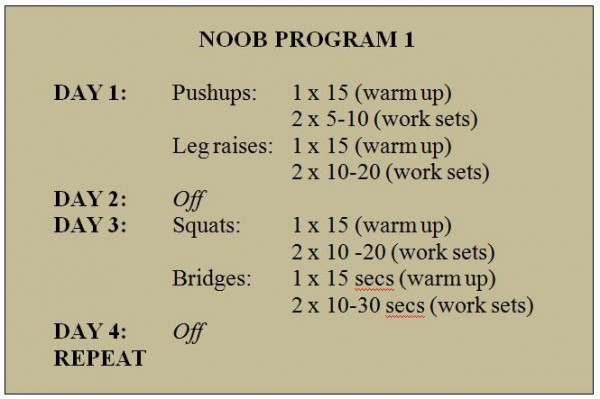 If you get sore, or stop making progress, add more rest days. If this seems easy, reduce rest days—but only if you keep making progress. If this seems like way too little, or you get fitter real fast, try the exercises all together:
If you get sore, or stop making progress, add more rest days. If this seems easy, reduce rest days—but only if you keep making progress. If this seems like way too little, or you get fitter real fast, try the exercises all together:
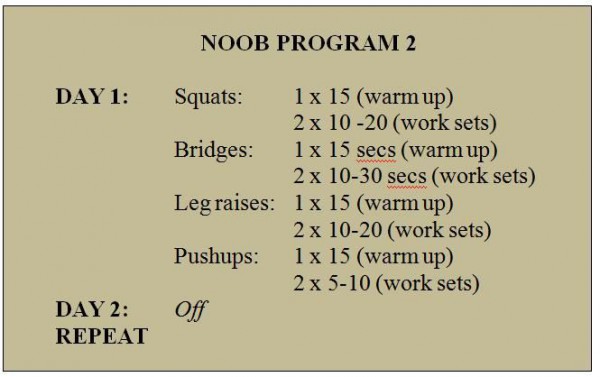 Take a day off in between workouts, or more if you need to. Some will say this is not enough work. It is. Trust me, if your numbers are going up, if you are making progress weekly, you are doing better than 95% of those suckers with expensive gym memberships. More detailed programming info is included in Convict Conditioning. For motivation and to keep ya on the straight and narrow, try to write down your training sessions in a logbook, ‘kay?
Take a day off in between workouts, or more if you need to. Some will say this is not enough work. It is. Trust me, if your numbers are going up, if you are making progress weekly, you are doing better than 95% of those suckers with expensive gym memberships. More detailed programming info is included in Convict Conditioning. For motivation and to keep ya on the straight and narrow, try to write down your training sessions in a logbook, ‘kay?
I’m too fat for bodyweight workouts!
No, you aren’t. Obese would-be ninjas need bodyweight training as much or more than slimmer folks—they just need to start with easier exercises.
I’m going to tell ya a well-known “secret” now…calisthenics and weight-loss go together like love and marriage. Once your body recognizes it is regularly struggling to heft its own weight up and down, the subconscious mind kicks in and will help you shed those useless pounds. I’ve seen this happen hundreds of times, and it will work for you too if you give it a chance.
Yes, nutrition will play a role, of course. You gotta start dealing with your weight at the same time you start bodyweight training: it’s no goddam use saying; “I’ll work out when I get to such-and-such a weight”, or; “I’ll start eating right when my training gets off the ground”. Start training AND eating well right now.
The Next Step: Moving to Intermediate Level
Okay. Let’s say you have worked for a few weeks—or months—to meet these fundamental requirements. Congrats, kid! You did it. You are now stronger and more mobile than the average American! Well done.
Whazzat…? You feel better? You have added muscle, and firmed up? You are hungry for MORE? You want to know how to take the next step, and work towards becoming an intermediate bodyweight athlete?!
Now your arms, back, waist and legs are stronger, you’re qualified to begin studying at the ultimate bodyweight training college—the School of the Bar! You gotta get hanging. This article is too short to discuss bar training and techniques. Luckily, Al Kavadlo has got you covered. With John Du Cane, Al has put out the super-acclaimed Raising the Bar…the master text-book of hanging training techniques.
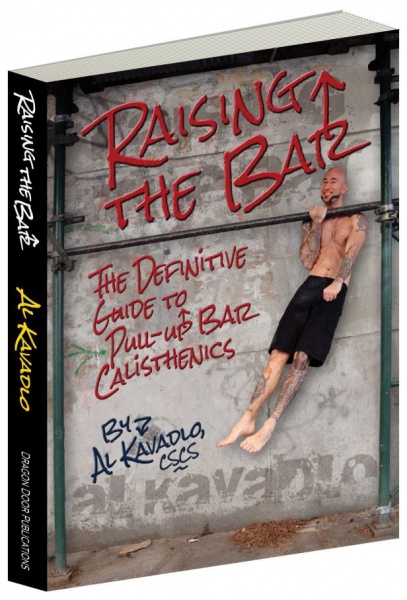
Despite what you might think, I’m not a Dragon Door “affiliate” or any of that crap, and I don’t get paid one cent for promoting Al’s book. It’s just too damn good not to mention. Raising the Bar includes every bar calisthenics technique under the sun—from Australian pullups and archer pullups, to muscle-ups and Korean dips, plus bonus floor training and pressing methods. Best of all, Al’s system is designed for bar athletes of all capabilities; whether you can do a hundred pullups, or if you can barely hang on to the bar, this book will get you stronger, safely.
Anyhow, I hope that gives some of you new fish some food for thought. You know somebody who needs to get started training? Be a true friend and email them a link to this post TODAY, so we can start helping them as soon as possible.
***
Got questions? Just holler at me in the comments, and I’ll do what I can to answer ya. Any experienced athletes who have advice for noobs (we are ALL ex-noobs, remember!), I’d also love to hear what you got to say, so please make a comment.
I need you all to step up this year—bodyweight is rapidly becoming the biggest movement in fitness, and I need you hidden geniuses out there to support us, and help tip it over the edge. I want lotsa ideas, questions, tips and feedback. So get typing, Jack!
***
Paul “Coach” Wade is the author of five Convict Conditioning DVD/manual programs. Click here for more information about Paul Wade, and here for more information on Convict Conditioning DVD’s and books available for purchase from the publisher.

